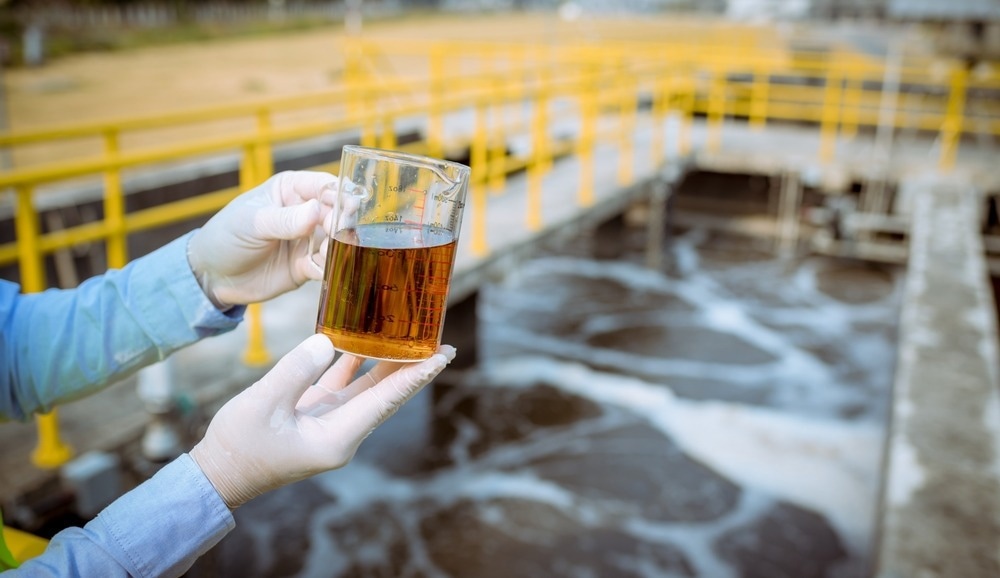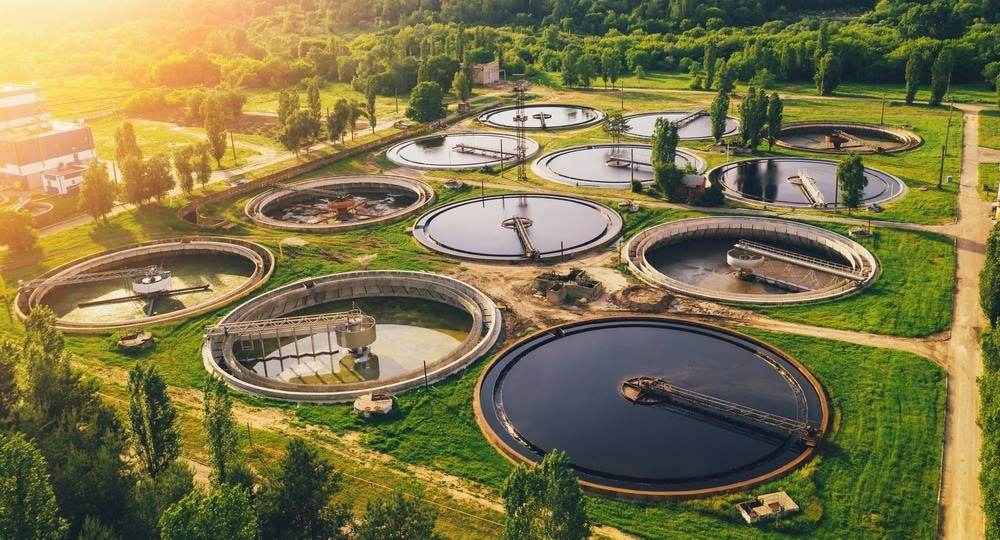In this interview, Sara Speak, the Industrial and Environmental Product Application Specialist for the Sievers Instruments product line at Veolia Water Technologies & Solutions, talks to AZoMaterials about the current challenges the food and beverage industry (F&B) faces in water management.
What current challenges does the food and beverage (F&B) industry face in water management?
Food and beverage (F&B) manufacturers face heightened pressures from competitors and consumers to address challenges related to water management, climate change, and environmental stewardship. Due to these pressures, most F&B manufacturers adopt corporate sustainability goals and publish water targets. However, these same manufacturers face pressure to improve productivity and safety while managing costs. Meeting regulatory standards and ensuring product safety can also make it difficult for manufacturers to meet sustainability targets. Still, there are ways to address these challenges with better water monitoring strategies and tools.

Image Credit: AUUSanAKUL/Shutterstock.com
Water is involved in F&B production processes and sometimes in the product itself. Opportunities exist to maintain productivity and safety standards but also find ways to reduce overhead costs such as water consumption, energy usage, and waste accumulation. Better analytical tools and monitoring systems are important components to help companies find ways to improve processes and meet their targets.
Wastewater treatment costs can increase quickly during process excursions, leading to a sudden buildup of waste and excess water use. Luckily, there are ways to prevent these upsets from leading to excessive costs and improve sustainability metrics.
How can F&B facilities reduce waste accumulation?
To understand how to reduce increased waste loading, we must first understand how and where it can happen. One of the main sources of waste is contaminated batches. Contamination events that affect product and/or safety integrity must always be addressed to protect brand reputation and consumer health. These events can occur due to inadequate cleaning or mixing, as well as due to chemical or microbiological issues.
Whether discovered early or late in the production process, bad batches will often lead to large amounts of product being dumped either into landfills or down the drain to wastewater. A large load such as this will cause a shock to the wastewater treatment process if not handled carefully. Contamination - either physical, biological, or chemical - deteriorates product quality, and therefore, it is essential that a manufacturing facility monitor the production process carefully to ensure these incidents do not occur. And if they occur, facilities need to know as quickly as possible to take necessary actions to prevent further damage.

Image Credit: APChanel/Shutterstock.com
How do F&B wastewater characteristics differentiate from other industrial wastewater?
Different industries pose unique challenges to wastewater treatment. Understanding the differences in wastewater characteristics is important because they can affect the treatment process and design. While municipal wastewater treatment can be predictable, industrial treatment tends to vary significantly with production demands. Common contaminants in their wastewater for mining and refining facilities include heavy metals, benzene-toluene-ethylene-xylene (BTEX), and other volatile organic compounds (VOC). At the same time, pulp and paper plants have to deal with challenging fibers.
F&B wastewater tends to have high amounts of fats, oils, and grease (known as FOG), suspended solids (TSS), organic matter (as BOD or COD), and nutrients such as nitrogen and phosphorus. The high amounts of organic content are due to the nature of F&B ingredients such as sugars, proteins, color/dye, and starch. In F&B wastewater treatment, these organic compounds must be broken down and removed, often using biological treatment. It is important to monitor organic levels in wastewater using a tool such as total organic carbon (TOC) analysis so that the microorganisms are balanced with the appropriate food (organics) to microorganism ratio or (F:M). Balancing the feed ensures microorganisms are not getting too much or too little nutrients and can efficiently break down and remove organic compounds.
How can changing the product type being manufactured affect wastewater treatment?
Sometimes, a F&B facility will focus on producing one product type at a steady rate, but there are many circumstances where a facility changes what they are producing and the frequency. This change in product manufacturing will change the characteristics of the facility's wastewater and require enhanced cleaning between batches and products. Washing and cleaning equipment between products contributes to the wastewater loading variability. Such significant changes in wastewater loading will cause the previous treatment practices to not be as effective at removing contaminants.
How can F&B wastewater characteristics impact treatment costs?
Due to high organic matter and FOG, biological treatment is important to treat F&B wastewater. Some examples of biological treatment include anaerobic digestion and activated sludge and membrane bioreactor (MBR) technology.
Anaerobic digesters have the extra benefit of capturing methane, which can be used as a renewable energy source for the facility, thus reducing greenhouse gas emissions. However, they have high operating costs and a significant initial investment but can efficiently handle high organic strength situations.
On the other hand, activated sludge has a low initial cost for installation. Still, the operating cost of aeration and recycling the sludge (especially if the volume of sludge is high) will increase the treatment cost.

Image Credit: DedMityay/Shutterstock.com
MBRs have become increasingly popular for F&B wastewater treatment facilities because they have a smaller footprint than the previous treatment options, requiring less operator attention and energy. The major consideration with MBR is ensuring that the membranes are protected from FOG, so pretreatment of the wastewater stream is critical.
The benefit of biological treatment is having microorganisms doing the work, and this approach can be less expensive than other treatment methods for such wastewater characteristics. The most significant cost is if the microorganisms experience a state of shock or starvation. If this happens, the microorganisms will need to be reseeded, which takes time and is costly. The good news is that these types of events are preventable by monitoring for organics in the wastewater and having equalization tanks (EQ) upstream to balance the loading.
How does continuous monitoring during wastewater treatment - such as organics monitoring with TOC - help operations avoid excess treatment costs?
Removing organic material is the primary goal for wastewater treatment in the F&B industry. Currently, testing individual samples, or “grab samples” of wastewater, is a common practice in the F&B industry to test the water quality. The problem with grab samples is that they only give a snapshot of the sample chemistry when it was taken, making it difficult to detect process upsets quickly. For example, if a grab sample is taken every 4-8 hours and an upset occurs during that window, that’s a long time for a problem to continue without being corrected. Another example is making treatment decisions off BOD grab samples, which can take five days to get results. A lack of correction can lead to many costly repercussions, including equipment damage, treatment malfunctions, product contamination, discharge excursions, and potential fines.
With continuous monitoring using total organic carbon (TOC), a facility can detect an upset in real time and quickly take action to prevent problems. F&B facilities can ensure the effectiveness of their treatment process, divert their wastewater in the event of an excursion before it reaches biological treatment, and prevent costly maintenance and repairs through continuous monitoring of organic content.
Removing organics from wastewater is critical for F&B facilities, and continuous monitoring will help ensure that their treatment is removing them effectively. Plants can directly monitor organics using TOC analysis, capturing continuous and true information about organic loading and removal. This is the optimal tool for making confident decisions faster.
Can you describe how Veolia Water Technologies & Solutions implements real-time solutions for managing and optimizing water treatment plants?
Sievers Instruments, part of Veolia Water Technologies & Solutions, provides process monitoring solutions for organics from source to steam to discharge. We aim to support rapid and reliable decision-making for quality control, process optimization, and regulatory or corporate compliance in real-time by providing technologies that simplify complex measurements and challenging environments. From tracking changes in the source water to detecting leaks that can damage equipment in utility water to optimizing wastewater treatment for reclaim or compliant discharge, our goal is to partner with end users to determine the right technology for each application.
Where can readers find more information? Please provide links to any materials that may be relevant to our audience.
About Sara Speak
Sara Speak is the Industrial and Environmental Product Application Specialist for Veolia Water Technologies & Solutions. She obtained her Bachelor of Science in Chemistry and Bachelor of Music-Violin Performance from Metropolitan State University of Denver. After graduating, she worked in the quality lab for Molson Coors Brewery in Golden, CO, and the analytical chemistry lab at Leprino Foods in Denver, CO.
About Veolia Water Technologies & Solutions
Veolia Water Technologies & Solutions is a subsidiary of the Veolia group and a leading specialist in total organic carbon (TOC) monitoring through its Sievers product line of analytical instrumentation. Our group has dedicated experts to help you develop methods, determine feasibility, and implement new applications to solve your most challenging water quality and treatment needs.
Disclaimer: The views expressed here are those of the interviewee and do not necessarily represent the views of AZoM.com Limited (T/A) AZoNetwork, the owner and operator of this website. This disclaimer forms part of the Terms and Conditions of use of this website.